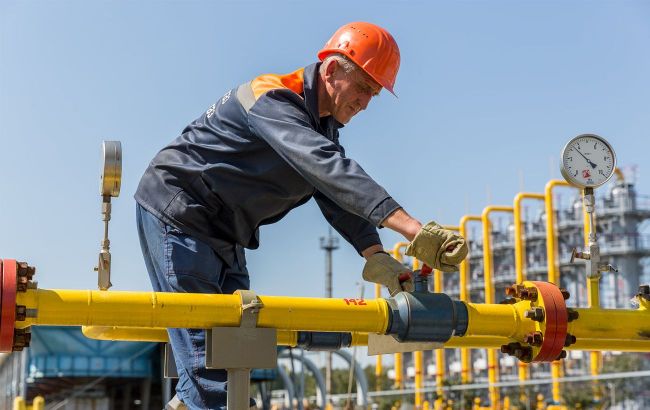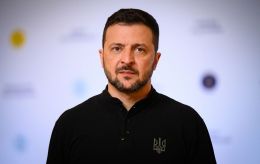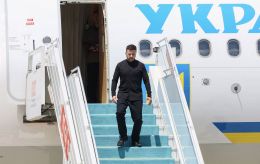Is gas transit at risk? Will EU maintain route through Ukraine and Azerbaijan’s role in it
 Photo: Ukraine is considering gas transit from Azerbaijan (facebook.com/gas.tso.ua)
Photo: Ukraine is considering gas transit from Azerbaijan (facebook.com/gas.tso.ua)
In recent months, Russia has secured its position as the second-largest gas supplier to Europe. However, the expiration of the current contract this year threatens the future of transit through Ukraine.
Why the European Union countries still need Russian gas, whether it can be replaced by Azerbaijani gas, and what other options are on the table - in RBC-Ukraine's review of Western media.
Content:
- How Russia returned to being the top gas supplier to the EU
- Why the EU still needs Russian gas
- Will Azerbaijan replace Russia? What’s planned for Ukraine's GTS in 2025
How Russia returned to being the top gas supplier to the EU
For the first time in nearly two years, European Union countries imported more natural gas from Russia in a single quarter than from the United States. This information comes from the German publication Die Welt, citing data from the Brussels-based consulting firm Bruegel.
Specifically, from April to June, the EU received approximately 12.7 billion cubic meters of gas from Russia, surpassing the 12.3 billion cubic meters imported from the US.
This marks a significant shift from the first quarter of 2024 when Russian imports showed a slight decline. During that period, American supplies saw a more substantial reduction.
Before Russia invaded Ukraine in February 2022, Moscow held the top spot among suppliers. The full-scale war forced many European countries to reduce imports from Russia. Since then, liquefied natural gas supplies from the US have increased, surpassing Russia in volume over six months, accounting for about 20% of the EU's gas supply by 2023.
However, by May 2024, Russia regained its position. The May figures were influenced by one-time factors, such as the shutdown of a major US LNG (Liquefied Natural Gas) export facility and an increase in Russian exports through Türkiye before the scheduled maintenance of the TurkStream.
Read more about this in the article “Why Russian gas is back on top in Europe and how EU plans to hit LNG imports”.
Despite the changes between Russia and the US, Norway remains the largest gas supplier to the European Union. In the second quarter of 2024, Norway exported 23.9 billion cubic meters.
Russia's resurgence as a significant supplier has rekindled discussions about the EU's energy dependency and geopolitical strategy. Norbert Röttgen, a German politician from the Christian Democratic Union (CDU) and Chairman of the Foreign Affairs Committee in the German Bundestag called for a complete ban on Russian gas imports.
He commented to Die Welt that Europeans support Ukraine with billions while simultaneously channeling billions into Vladimir Putin's military treasury, describing this as neither responsible, rational, nor trustworthy.
Michael Kruse, energy policy spokesman for Germany's pro-business Free Democratic Party (FDP) in the Bundestag, proposed imposing a fixed fee on each cubic meter of Russian gas to fund financial and military aid for Ukraine.
"This would allow Putin to pay for the resistance against his barbaric attacks himself," he added.
Why the EU still needs Russian gas
Western countries still require Russian gas, which transits through Ukraine. Austria, Hungary, and Slovakia are particularly dependent on it, according to The Economist.
The situation in the Kursk region came as a surprise to European energy markets. News that Ukrainian forces had taken control of the city of Sudzha, where the last major Russian gas export terminal through Ukraine is located, was enough to drive up the base gas price to a record level in 2024.
According to The Economist, Ukraine and Russia reached an agreement, so transportation through Sudzha continues. However, it remains unclear whether this will continue into the next year. Kyiv and Moscow, along with the EU, signed a transit agreement in 2019, which expires at the end of 2024.
The EU, aiming to phase out Russian gas by 2027 completely, does not wish to extend the agreement. Ukraine, due to the war, is not interested in direct contracts with the aggressor. "We don’t want to extend the gas contract. We don’t want them making money here," President Volodymyr Zelenskyy said.
However, officials in Brussels are concerned as some countries remain heavily reliant on Russian gas. The most at-risk are Hungary, Slovakia, and Austria.
Last year, Russian supplies constituted about 47% for Hungary, 89% for Slovakia, and 97% for Austria in January. Some of this gas, particularly from Hungary, comes through the TurkStream (pipeline to the Balkans) and will continue in 2025.
Yet, a significant portion of Russian gas transits through Ukraine. "They’re really not in a great position," The Economist quotes a European diplomat.
This trio remains dependent on Russian gas due to their geography. While Germany and Italy receive liquefied gas at maritime terminals, Hungary, Slovakia, and Austria, lacking sea access, rely on pipelines. For Austria, where several pipelines converge, bottlenecks are less critical. However, deliveries from west to east for Budapest and Bratislava will require costly expenditures.
Local gas companies are bound by long-term contracts with Russia. Slovakia's contract with Russia's Gazprom expires in 2028, Hungary signed a 15-year deal in 2021, and Austria’s biggest gas firm, OMV, is tied to a contract extending to 2040. Early termination could cost Austria up to 1 billion euros.
Another issue is politics. Hungary's pro-Kremlin government proposed increased gas purchases last year. According to Slovak Prime Minister Robert Fico, supplies through Ukraine should continue in 2025 (a statement Ukraine has denied). European officials are disappointed.
"If they had done more to get off Russian gas two years ago, we wouldn’t even be having this conversation," a diplomat said.
According to The Economist, Ukraine is exploring the possibility of transit from Azerbaijan to support supplies through its gas transportation system. However, the feasibility of this scheme remains unclear. Despite two winters following the invasion, Russian gas continues to impact Europe.
Will Azerbaijan replace Russia? What’s planned for Ukraine's GTS in 2025
Currently, Azerbaijan is negotiating to expand gas exports to at least three European countries. President Ilham Aliyev mentioned this at an economic conference in Ambrosetti, Italy, without naming specific countries.
According to Bloomberg, Baku already supplies gas to eight European countries and aims to double its exports by 2027. Aliyev also confirmed that Kyiv and Moscow sought help with transit through Ukraine ahead of the contract's expiration on December 31.
It remains uncertain if a workaround will be found. Last summer, President Zelenskyy confirmed to Bloomberg that Ukraine is negotiating gas supplies from Azerbaijan. An agreement to replace Russian gas with Azerbaijani supplies is one of the proposals under discussion.
Such a replacement would allow Ukraine to continue receiving transit payments while Europe maintains its gas supply. According to Azerbaijan’s Ministry of Energy, the country exported 24 billion cubic meters of gas last year, with half going to Europe. This year, exports are expected to reach 13 billion cubic meters, with Italy as the largest buyer. Other countries include Greece, Bulgaria, Romania, Hungary, Serbia, Slovenia, and Croatia.
"We just want to support those countries and also Ukraine because if the transit stops Ukraine's gas distribution system will be absolutely paralyzed. We have a certain optimism, I think there is ground for a breakthrough," Aliyev said.
At the same time, Europe fears that 2025 supplies might still include Russian flows. Czech Energy Minister Jozef Sikela noted the risk that Azerbaijani gas could be mistakenly identified as non-Russian while potentially being substituted with Russian gas en route to Ukraine.
"In case gas transit from Russia via Ukraine is halted, replacement supplies must be found primarily with alternative suppliers. We need to avoid a situation when we purchase gas that is formally non-Russian, but which could be swapped for Russian gas en route, undermining our efforts to reduce dependency on Russian supplies," he wrote to current EU Commissioner for Energy Kadri Simson.
According to him, the most likely alternative could be the transportation of LNG from Western Europe to the east. Sikela assured that Czech pipelines have sufficient capacity to replace Russian gas supplies (via the Ukrainian route) of 40 million cubic meters per day.
"Russia repeatedly demonstrated that it is an unreliable trading partner willing to use energy supplies as a weapon to disrupt and destabilize our energy market and the entire economy. We have made substantial progress in reducing Russian energy imports to the EU, nevertheless, we must intensify our efforts," he added.
Essentially, his proposal involves supplies bypassing Ukraine. How popular this idea is in Europe will become clear in the coming weeks. Sikela is nominated for the position of the next EU Commissioner for Energy, with confirmation expected this fall.
Sources: Die Welt, Bloomberg, and The Economist.

